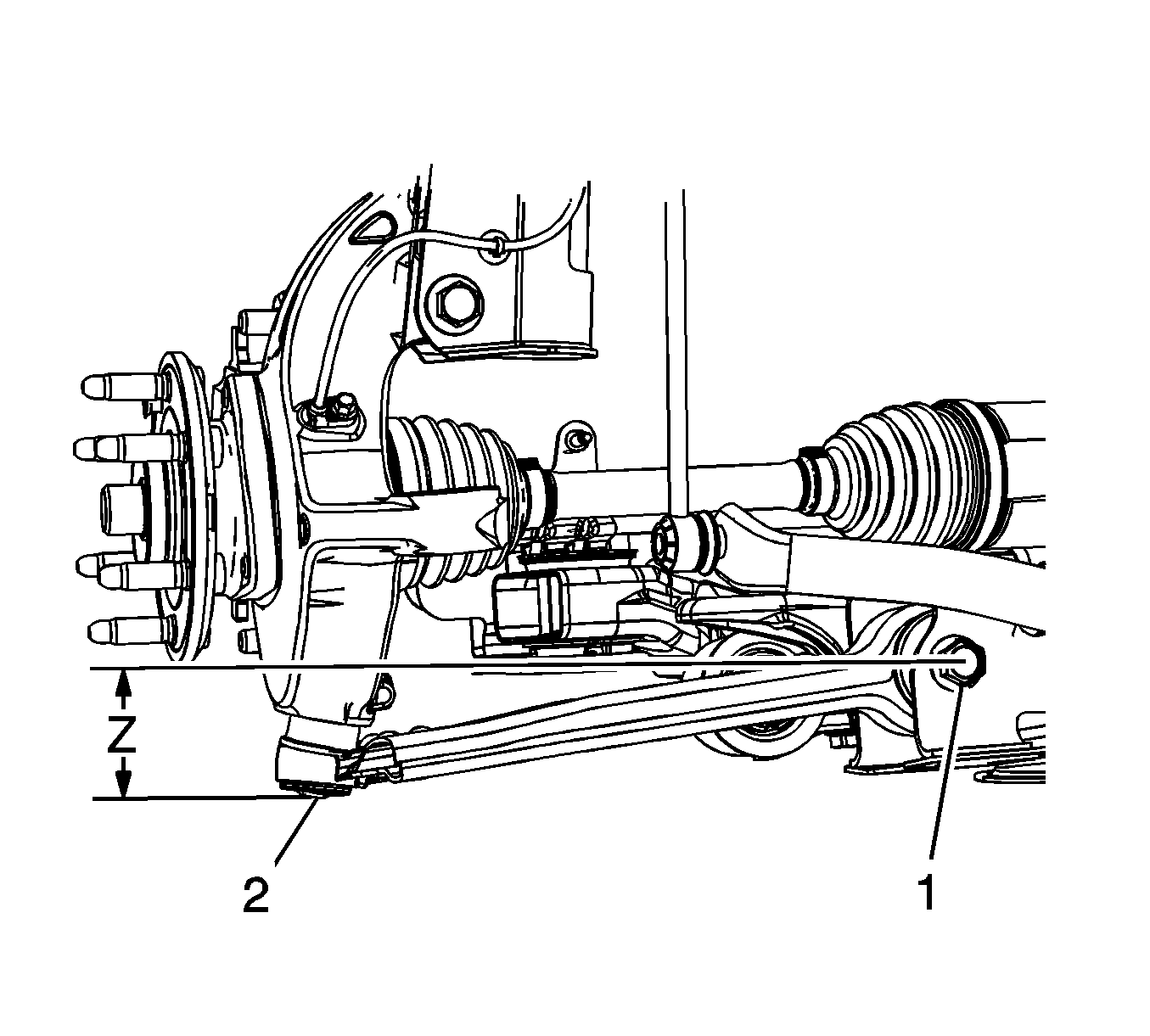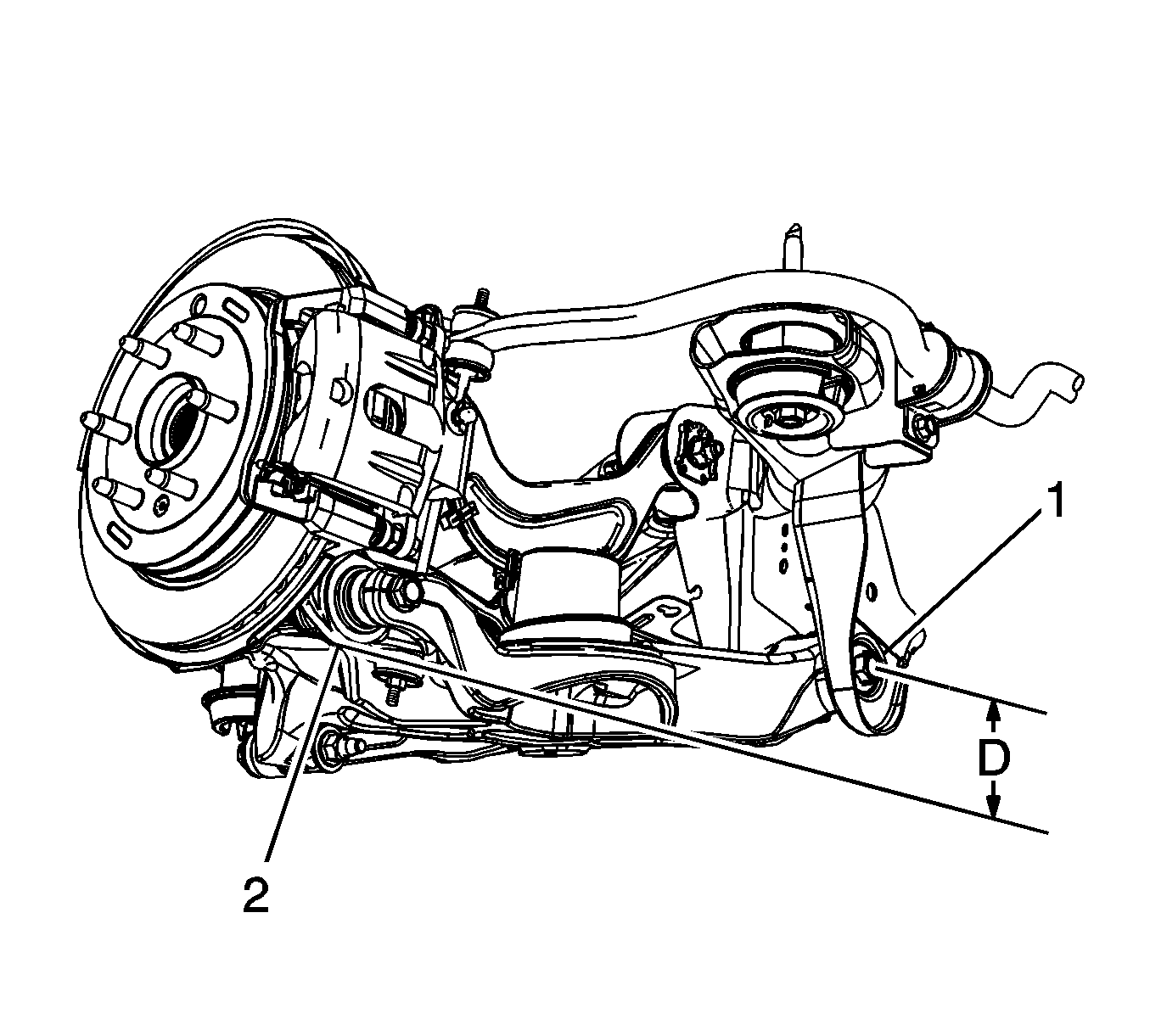Trim Height Measurement
Trim height is a predetermined measurement relating to vehicle ride height. Incorrect trim heights can cause the vehicle to bottom out over bumps, damage to the suspension components and symptoms similar to wheel alignment problems. Check the trim heights
when diagnosing suspension concerns and before checking the wheel alignment.
Perform the following before measuring the trim heights:
| • | Check the fuel level. Add additional weight if necessary to simulate a full tank. |
| | One U.S. gallon of gasoline weighs approximately 6.5 lbs. One liter of gasoline weights approximately 0.70 kg. |
| • | Make sure the passenger and rear compartments are empty, except tor the spare tire. |
| • | Make sure the vehicle is on a flat and level surface, such as an alignment rack. |
| • | For vehicles equipped with automatic level control, ensure the system is functioning properly. |
| • | Check that all the vehicle doors are securely closed. |
| • | Check that the vehicle hood and rear deck lids are securely closed. |
| • | Check for installed after market accessories or modifications that could affect trim height measurement: |
| - | Larger of smaller than production wheels and tires |
| - | Lifting or lowering kits |
| - | Wheel opening flares or ground affects |
Measuring the Z Height

Important:
| • | In order to obtain the proper measurement, Z will equal inner minus the outer. |
| • | The left and right Z height difference should be no more than 12 mm (0.47 in). |
Use the following procedure to measure the Z height:
- Lift the front bumper of the vehicle up about 38 mm (1.5 in).
- Gently remove your hands and let the vehicle settle.
- Repeat this operation 2 more times for a total of 3 times.
- Repeat this jouncing operation 2 more times for a total of 3 times.
- Measure from the center of the lower ball joint (outer) 2 to the center of the lower control arm bolt (inner) 1.
- Push the front bumper of the vehicle down about 38 mm (1.5 in).
- Gently remove your hands and let the vehicle settle.
- Repeat this operation 2 more times for a total of 3 times.
- Re-measure the Z height as in step 5.
- The true Z height is the average of the measurements taken in steps 5 and 8. Refer to
Trim Height Specifications.
If any of these measurements are out of specifications, inspect for the following conditions:
| • | Worn or damage suspension components |
Measuring the D Height

Important:
| • | In order to obtain the proper measurement, D will equal inner minus the outer. |
| • | The left and right D height difference should be no more than 12 mm (0.47 in). |
Use the following procedure to measure the D height:
- Lift the rear bumper of the vehicle up about 38 mm (1.5 in).
- Gently remove your hands and let the vehicle settle.
- Repeat this operation 2 more times for a total of 3 times.
- Use the outer flat spot 2 on the knuckle as the reference point for the D height measurement.
- Measure from the outer on the knuckle to the center of the lower control arm bolt (1).
- The difference between these 2 measurements is the D height.
- Lift the rear bumper of the vehicle up about 38 mm (1.5 in).
- Gently remove your hands and let the vehicle settle.
- Repeat this operation 2 more times for a total of 3 times.
- Re-measure the D height as in step 4.
- The true D height is the average of the measurements taken in steps 4 and 8. Refer to
Trim Height Specifications.
If any of these measurements are out of specifications, inspect for the following conditions:
| • | Worn or damage suspension components |


